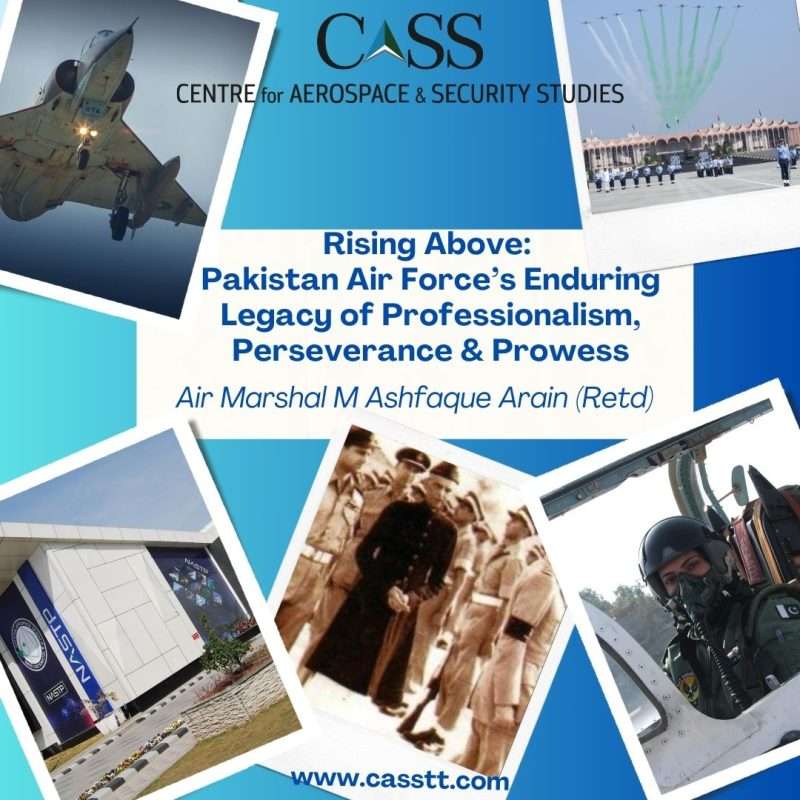The Pakistan Air Force (PAF) stands among the world’s most professional and competent air forces. With a proven track record, it has successfully faced an adversary thrice its size in wars and conflicts. It also holds the unique distinction of having fought against the Union of Soviet Socialist Republics, a superpower at the time, shooting down nearly a dozen aircraft without suffering any losses from the adversary. It is also the only air force whose pilots have shot down Israeli aircraft without suffering a loss. At a very young age, it has also helped establish the air forces of other countries and trained almost all the air forces in the Gulf region. While these accomplishments are generally known, a lesser-known fact is how a very small air force achieved such feats.
After Pakistan attained independence in 1947, the Royal Pakistan Air Force (RPAF) was created from the Royal Indian Air Force. At the time, RPAF was a small service with a handful of personnel and insignificant equipment. It only had 220 officers and 2112 airmen, including pilots, technicians and other specialists. It received only two fighter and one transport squadron; was equipped with war-worn attacker, fury and tempest aircraft. The Indian Air Force (IAF) failed to deliver RPAF’s allocated equipment on time. Instead, through a deliberate and sinister plan, they introduced bottlenecks to hinder the timely delivery of Pakistan’s share. Much of what was delivered was also in poor condition. Initially, the infrastructure was scanty, with no training institutions, limited maintenance and logistics systems, and minimal assets. Furthermore, the IAF declined to train PAF pilots and technicians.
The assets that RPAF received were disproportionate to the vastness of the country they were tasked with defending. PAF’s true strengths were its far-sighted leadership and the resilience of its hardworking personnel. Even with financial constraints, equipment shortages, and limited human resources, the leadership was determined to swiftly build a force equipped to fulfill its duties.
In the early dawn of its independence, the RPAF stood with just a trio of bases – the historic grounds of Peshawar, Chaklala, and Drigh Road (now known as PAF Faisal). Imagine a fledgling bird, with just a few feathers, aspiring to rule the vast skies. The strategic addition of PAF Station Risalpur on August 15th, 1947, followed swiftly by the establishment of the Flying School a month later, marked the start of a new chapter. Yet, the existing infrastructure was far from enough. With an eye on history and a vision for the future, the PAF leadership looked to old World War-II airfields as potential bastions for new bases. But such planning wasn’t just about the land – the vital arteries of logistics, engineering, and support systems were missing, waiting to be drawn from mere imagination to tangible reality. Against all odds, and with a reservoir of resilience, these systems were erected on strategic terrains to bolster air operations.
In a twist of fate, the IAF’s refusal to train RPAF personnel became a catalyst for self-reliance. The RPAF Flying Training School at Risalpur emerged, almost overnight, on September 15th, 1947, acting as a crucible for both officer training and nascent pilot development. By April the following year, during the revered visit of Quaid-i-Azam, it was christened a college, an emblem of its elevated stature. And for the meticulous training of both technical and non-technical forces, specialised schools sprung up, further fortifying the foundation of the Air Force.
In the heart of the Cold War era, the skies echoed with the roaring engines of fighter planes, and pilots pushed their skills to the edge. Recognising the critical importance of superior combat training, the PAF introduced a cutting-edge fighter conversion and operational system. By 1958, PAF Mauripur became home to the Fighter Leaders School, a hub for advanced skills and tactical innovation. However, like all things faced with challenges, it saw a decline in the ’70s due to myriad constraints. Yet, the spirit to thrive did not fade. Rising from the ashes in 1976, the Combat Commanders School at Sargodha became the new beacon of advanced combat tactics and training.
Embracing an integrated vision, the PAF Staff College was inaugurated at Drigh Road in 1959, serving as a cradle of leadership and strategy. By 1987, it evolved into the prestigious PAF Air War College, offering an enhanced course structure. The promotion landscape transformed from conventional exams to the innovative Junior and Senior Command and Staff Courses, ensuring continuous growth and refinement for officers. The establishment of the JCO Academy at Korangi Kreek further added a feather to the PAF’s training cap. This relentless pursuit of excellence has not wavered. Like the world’s top-tier air forces, PAF’s leadership has been unwavering in its commitment, investing in the creation, modernisation, and sustenance of a robust training and education system.
PAF’s story is a saga of courage and determination in the face of multiple hardships and difficulties. It has been a journey, not just of machines in the skies, but of the indomitable spirit of its personnel, guided by visionary leadership. Despite grappling with sanctions, the looming shadows of outdated systems, and a paucity of crucial resources, the PAF has never lost its trajectory. Through wars and peace, crises and calm, it has not only met but often surpassed the nation’s hopes. Beyond the call of battle, the PAF has soared in its humanitarian missions, both at home and on foreign shores, echoing the timeless words of the Quaid: ‘An Air Force Second to None’.
The author is a retired Air Marshal of the PAF who served as Pakistan’s Air Advisor at New Delhi from 2002-2006, presently working as Director Technologies and International Coordination at Centre for Aerospace & Security Studies, Islamabad, Pakistan. The article was first published in The Nation. He can be reached at [email protected]
Design Credit: Mysha Dua Salman





